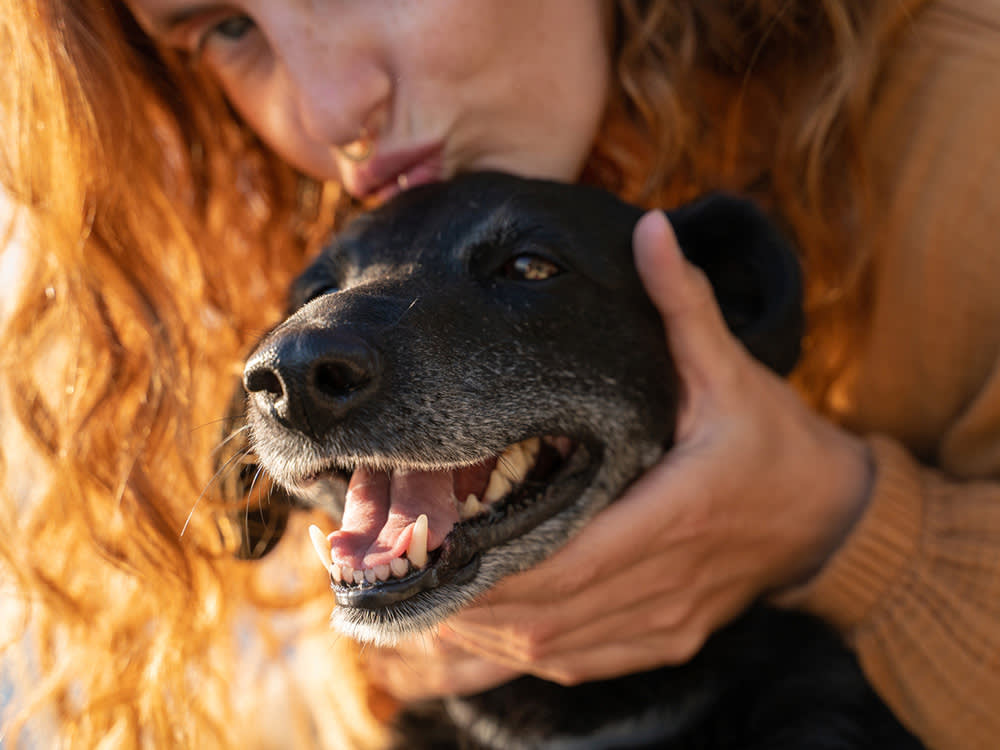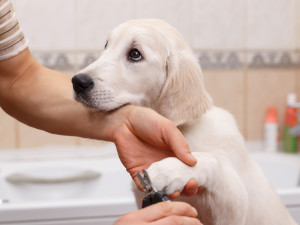They’re Just Like Us: Dogs Get Gingivitis
Dogs can suffer from gum disease, too. Here’s how to prevent it

share article
You’re probably well aware of the warnings against human gingivitis – they’ve likely been scared into you by dentists who are a little suspicious of your self-reported flossing habits. But as it turns out, humans aren’t the only ones who can get the gum disease; dogs are at risk, too. And the condition’s no joke: gingivitis in dogs causes inflammation of the gums around the teeth and can lead to more serious health conditions, such as kidney, liver and heart disease. The good news is, it can be prevented. Here’s how.
Symptoms of gingivitis in dogs
Until gingivitis reaches an advanced stage, it can be difficult to detect, so your dog may not exhibit symptoms at first. That’s why it’s important to get their teeth regularly checked at the vet. The tell-tale signs of advanced gingivitis are:
bright-red gums
swollen gums
excessive plaque and tartar build-up
bleeding gums, especially when brushing teeth
receding gums
loose teeth
What causes gingivitis in dogs?
Dr Bert Dodd, a clinical professor at the Texas A&M University College of Veterinary Medicine and Biomedical Sciences, says that gingivitis in dogs is very common and every dog has it – to some degree.
Just like in humans, gingivitis in dogs is caused by plaque build-up on the tooth, which is made up of food, saliva and bacteria. Through an interaction between these foreign bacteria and the body’s immune system, enzymes are released that break down the gum tissue, leading to inflammation.
At more advanced stages, build-up can lead to chronic pain and gum erosion. “If left untreated, gingivitis leads to periodontitis, or inflammation and destruction of the hard tissues around the tooth,” says Dr Dodd. “In addition to increasing the potential for heart, kidney and liver disease, unchecked gingivitis may result in missing teeth and bone loss in severe cases.”
How to prevent gingivitis in dogs
Luckily, gingivitis can be easily prevented through routine oral care habits. Dr Dodd recommends brushing your dog’s teeth daily to remove harmful bacteria and prevent a build-up of plaque. Although some dogs may be resistant to having their teeth brushed at first, over time, a regular routine will acclimate them. Human toothpaste is toxic to animals, but special dog toothbrushes and toothpastes can be purchased from most pet shops.
Dr Dodd also recommends having your dog’s teeth professionally cleaned every year. If your dog does develop gingivitis, it can be managed through teeth cleaning and debridement, or the surgical removal of damaged tissue by a veterinarian.
Again, it may take some time, but establishing a proper dental hygiene routine for your dog is crucial. Not only will you keep their pearly whites sparkling, you’ll also prevent some serious health conditions from surfacing later in life.

Jennifer Gauntt
Jennifer Gauntt, MA, is the communications director at Texas A&M University College of Veterinary Medicine & Biomedical Sciences, where she covers scientific advancements in pet heath and behavior. This story was originally published by Pet Talk, a service of the College of Veterinary Medicine & Biomedical Sciences, Texas A&M University. Original stories can be viewed on the web at vetmed.tamu.edu/news/pet-talkopens in a new tab. May be edited for style and length.

